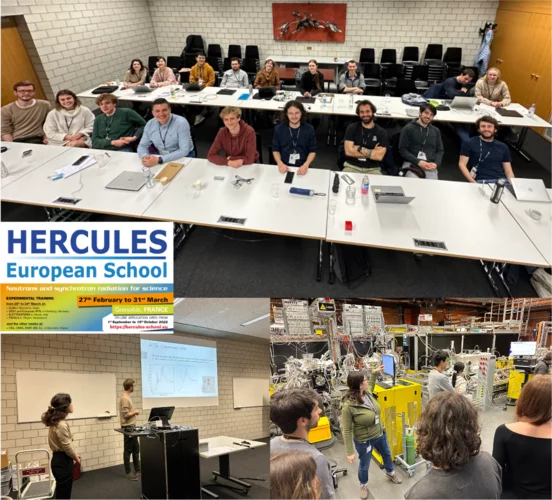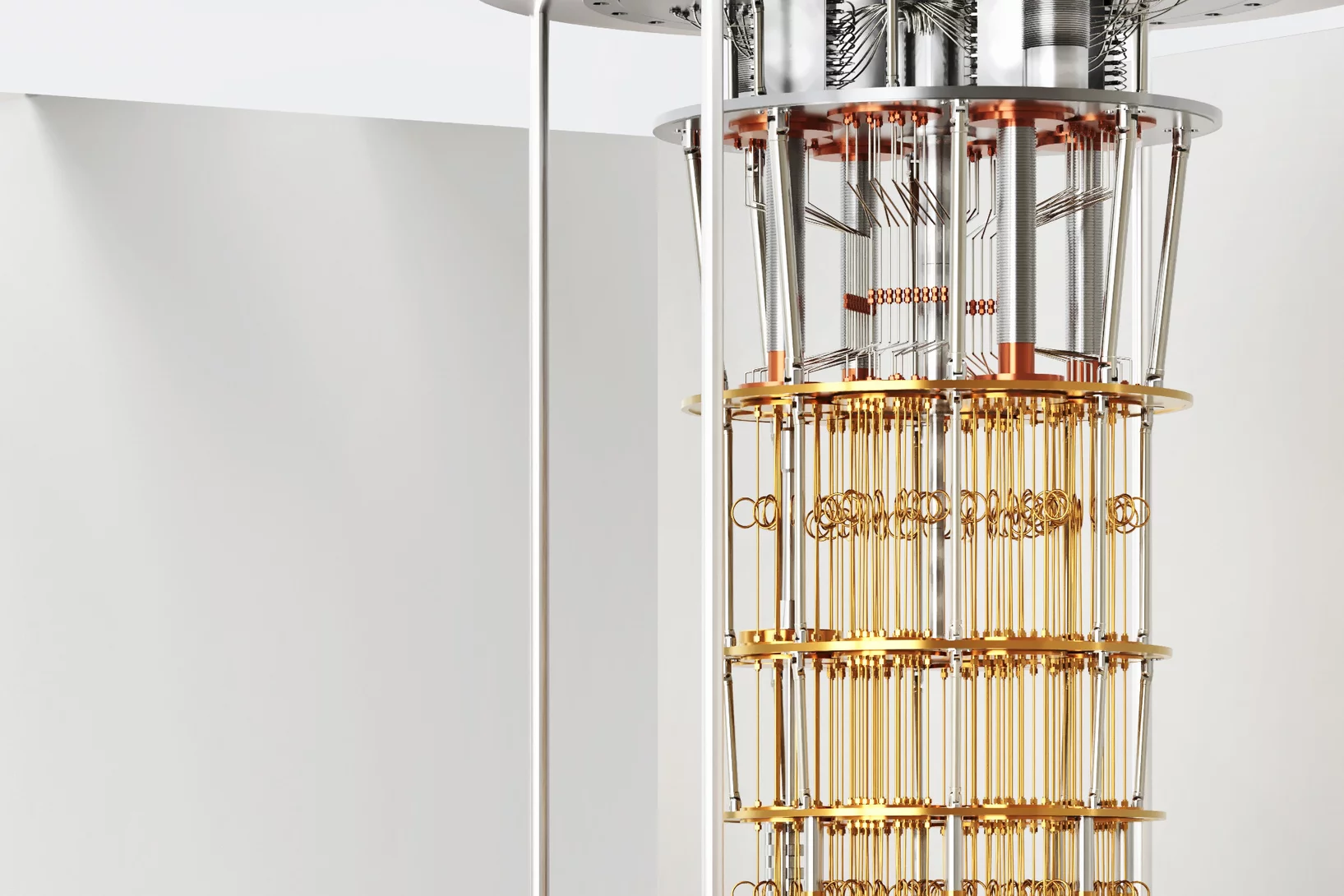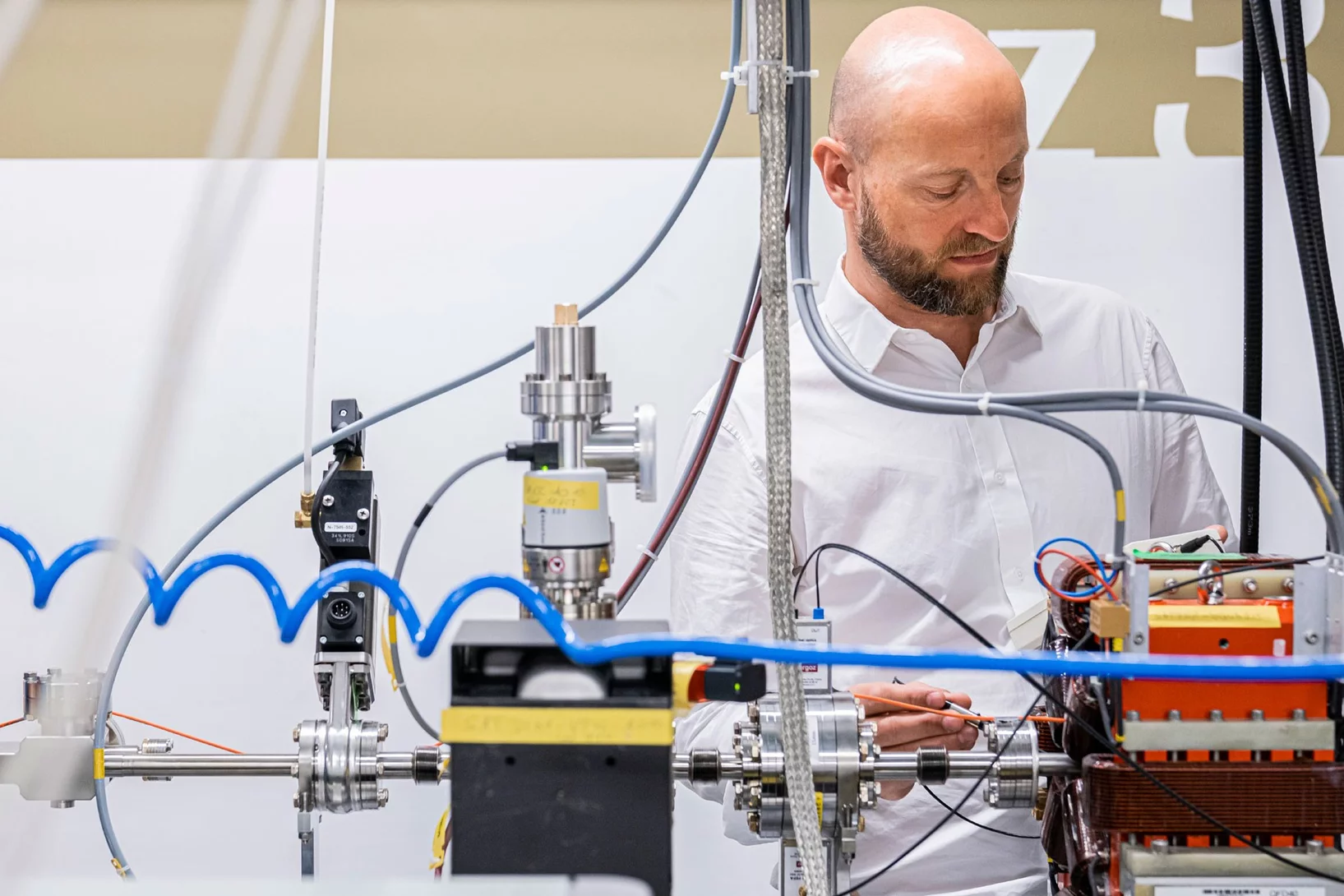Nobel Prize winner Anne L’Huillier visits SwissFEL
X-ray free-electron lasers could unlock the next frontier in attosecond research
Controlling magnetic waves in a spin liquid
Scientists at the Paul Scherrer Institute PSI have shown that excitation of a spin liquid with intense THz pulses causes spins to appear and align within less than a picosecond. This induced coherent state causes a magnetic field to form inside the material, which is detected using ultrashort X-ray pulses at the X-ray Free Electron Laser SwissFEL.
Un changement fondamental
L'intelligence artificielle aide à évaluer efficacement des quantités de données inimaginables et à exploiter pleinement le potentiel des grandes installations de recherche.
Short x-ray pulses reveal the source of light-induced ferroelectricity
Ultrafast measurements of the fluctuating atomic positions in the quantum paraelectric SrTiO3 after mid-infrared light excitation, reveal details about the creation of the material’s ferroelectric state.
SwissFEL: a next generation tool for Attosecond Science
The 2023 Nobel Prize in Physics recognises attosecond science’s pioneers. Past and future, this field’s evolution is entwined with SwissFEL.
Réparer de l’ADN endommagé avec la lumière du soleil
Les dommages infligés à l’ADN sont une cause du vieillissement, de la mort cellulaire et même du cancer. La capacité à réparer de l’ADN endommagé revêt donc une importance cruciale pour tous les organismes. Au SwissFEL du PSI, une équipe internationale de recherche vient d’étudier la manière dont la photolyase, une enzyme, utilise l’énergie de la lumière du soleil pour ce mécanisme de réparation.
The secret life of an electromagnon
SwissFEL sheds light on how lattice and atomic spins jiggle together.
Apporter la lumière du SwissFEL aux utilisateurs industriels
Des expériences à haut débit permettront aux utilisateurs en biologie structurale de bénéficier de la lumière d’un XFEL.
Tender X-rays show how one of nature’s strongest bonds breaks
Short flashes of an unusual kind of X-ray light at SwissFEL and SLS bring scientists closer to developing better catalysts to transform the greenhouse gas methane into a less harmful chemical.
A compact gas attenuator for the SwissFEL ATHOS beamline realized using additive manufacturing
Gas attenuators are important devices providing accurate variation of photon intensity for soft X-ray beamlines. In the SwissFEL ATHOS beamline front-end the space is very limited and an innovative approach has been taken to provide attenuation of three orders of magnitude up to an energy of 1200 eV. Additive manufacturing of a differential pumping system vacuum manifold allowed a triple pumping stage to be realized in a space of less than half a meter. Measurements have shown that the response of the device is as expected from theoretical calculations.
Un algorithme pour des films de protéines plus nets
Un algorithme qui vient d’être développé permet d’analyser plus efficacement les mesures faites aux lasers à rayons X à électrons libres.
The Hercules School visits PSI
20 international students visited PSI as part of the renowned Hercules School to learn about our state-of-the-art techniques and methodologies at our large scale facilities.
Ainsi débute la vision
Des chercheurs du PSI ont analysé ce qui se passait tout au début dans l’œil quand la lumière atteint la rétine.
Utiliser la lumière pour activer et désactiver des médicaments
Des chercheurs du PSI tournent un film moléculaire d’un médicament anticancer doté d’un interrupteur. Cela ouvre de nouvelles perspectives pour les développeurs de substances actives.
L’entreprise de haute technologie VDL ETG est désormais voisine du PSI
L’entreprise néerlandaise VDL ETG a signé un contrat de bail avec le Park Innovaare.
3,1 millions de subventions pour de nouveaux projets de recherche au PSI
Zurab Guguchia et Kirsten Schnorr, tous deux chercheurs au PSI, reçoivent du Fonds national suisse des subsides de recherche d’un montant total de 3,1 millions de francs pour leurs projets tournés vers l’avenir.
Strong modulation of carrier effective mass in WTe2 via coherent lattice manipulation
Schematic ultrafast surface diffraction setup used for monitoring the crystal lattice in multiple directions.
Un bout d’histoire du PSI entame un long voyage
Cap sur Down Under: un composant de haute technologie du PSI a pris la mer pour servir désormais à l’Australian Synchrotron à Melbourne.
Une solution à l’insoluble
Le PSI et l’ETH Zurich ont créé le Quantum Computing Hub. Des chercheurs de pointe y collaborent au développement d’ordinateurs quantiques.
Athos just got even better
An ambitious upgrade at the soft X-ray beamline of the free electron laser SwissFEL opens up new experimental capabilities.
Plus vite et intelligemment
Le PSI regroupe son expertise en matière d'évaluation des données de recherche dans la nouvelle division de recherché Calcul scientifique, théorie et données.
New SwissFEL soft X-ray endstation welcomes first users
Maloja is go. First user experiments mark a double first, not only for the Maloja endstation but also for the second beamline of SwissFEL, Athos.
Hercules School 2022
PSI hosted again the Hercules School in March 2022. We had the pleasure to welcome 20 international PhD students, PostDocs and scientists to demonstrate our state-of-the-art techniques and methodologies at our large scale facilities, the Swiss Light Source (SLS), the Swiss Spallation Neutron Source (SINQ) and our free electron laser SwissFEL.
L’univers miraculeux des antennes moléculaires
Comment des processus dans des cellules peuvent être activer et désactiver par des récepteurs de lumière
Opening the door to X-ray quantum optics
The 'perfect' X-ray beam-splitter: Researchers at SwissFEL have an ingenious solution to produce coherent copies of pulses, facilitating a realm of new X-ray techniques.
Priority access call for work on combating COVID-19 continues
On January 30th, 2020, the WHO declared the recent outbreak of coronavirus disease 2019 (COVID-19), a public health emergency of international concern. It declared that there is an urgent need to improve our understanding of the newly identified virus and its possible future evolution as well as to contain the spread; to develop precise diagnostics and treatment, and to improve the public health response and patient care.
The COVID priority access call continues and is still open in 2022.
Anomalous temperature dependence of the experimental x-ray structure factor of supercooled water
Supercooled water scattering signals show an anolmalous structure factor temperature dependence suggesting decreasing density at lowering temperatures below 236 K (-37°C).
Overview of SwissFEL dual-photocathode laser capabilities and perspectives for exotic FEL modes
SwissFEL is a compact, high-brilliance, soft and hard X-ray Free Electron Laser (FEL) facility laser composed of two parallel beam lines seeded by a common linear accelerator (LINAC), and a two-bunch photo-injector. For the injector, an innovative dual-photocathode laser scheme has been developed based on state-of-the-art Ytterbium femtosecond laser systems. We just published an overview of the the SwissFEL Photo Cathode Drive Lasers (PCDL) performance, pulse shaping capabilities as well as the versatility of the systems, which allow many different modes of operation of SwissFEL [1]. The full control over the SwissFEL electron bunch properties via the unique architecture of the PCDL will enable in the future the advent of more advanced FEL modes; these modes are, but not restricted to, the generation of single or trains of sub-fs FEL pulses, multi-color FEL and finally the generation of fully coherent X-ray pulses via laser-based seeding.
Contrôle ultrarapide de matériaux quantiques
Utiliser la lumière pour modifier fondamentalement les propriétés des solides
Ultrafast electron localization
This experiment performed at SwissFEL shows how fast we can localize electrons out of an electron gas into correlated, well localized states of a material. It is based on a combined ultrafast x-ray absorption and diffraction experiment on an intermetallic system.





























